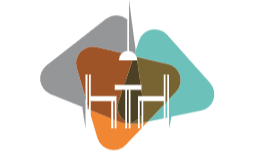Whether you’re looking for a weekend retreat, tiny home, garden shed or a modern cabin, these kit homes are the stuff design lovers’ dreams are made of. These contemporary kits can be a great alternative to traditional and prefabricated homes, with benefits like reduced costs and a quicker build time.
Generally, kit houses come in flat packs with pre-cut and partially assembled materials that you then assemble on your land yourself. They’re aimed at those who want to be hands-on with their project and save on the cost of professional builders. The amount of kit that you purchase may vary, from a simple building envelope through to a full house package.
A variety of companies are designing modern-style kit homes for a wide range of uses. For example, the Deltec 360deg Collection is a series of prefabricated circular dwellings that are designed to be both unique and adaptable living structures. Their circular design eliminates interior load-bearing walls, which allows for the whole floor plan to be customizable. They can be built for a wide variety of climates, and are very energy efficient with natural ventilation and insulation. Standard kits start at $250 per square foot and include only the shell of the structure, as windows, siding and porches are extra.
The modern prefab movement is being driven by a combination of factors, including cost savings, speed and quality of build, increased sustainability and environmental concerns and the desire to avoid the high cost of site-built construction. Companies like Blu Homes, Node, Yves Behar for LivingHomes and Connect Homes are among those leading the way with a broad range of modern designs.
Some modern prefab designers specialize in a particular type of structure, while others focus on the overall look and feel of the finished product. The Backcountry Cuboid from SKALI is a good example of the latter. The compact and minimalist structure makes a statement with a slatted wall that can hide or reveal an expansive glass window to link the interior space with the outdoors.
Modern prefab homes are typically less expensive than a traditional house because they’re usually built in a factory setting where labor is cheaper and workers aren’t at the mercy of the weather. Another pro is that prefab kits are often delivered to your site fully completed, which can reduce or even eliminate the need for costly foundation work and plumbing and electrical installations. However, there are some disadvantages to these homes as well. One is that the standards for these kinds of homes can vary widely from manufacturer to manufacturer so be sure to research carefully to find the right one for your needs. In addition, it can sometimes be difficult to get a loan for these types of homes due to their unusual nature. This is especially true if you’re planning to use it as an investment property. Be sure to speak with a mortgage broker before making any decisions.

